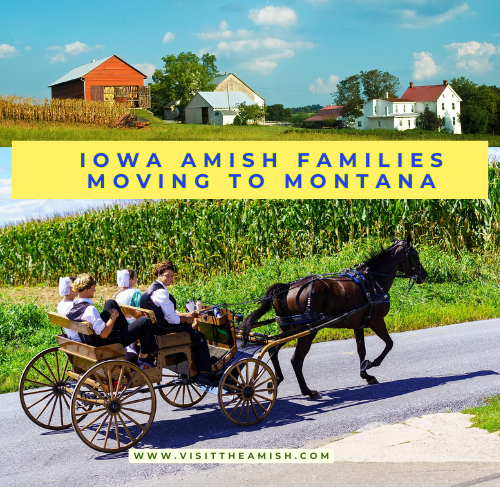The Amish community in Jackson County, Iowa, is undergoing significant changes as several families relocate to Montana. This migration has led to noticeable transformations in the local landscape and community dynamics.
In 1996, Albert and Edna Keim established a farm between Andrew and Bellevue, initiating an Amish settlement that grew to 14 families over the years[4]. Many of these families originated from Cashton, Wisconsin, drawn by the promise of a new community in northeast Iowa.
However, Albert Keim’s longstanding desire to live in Montana’s less populated prairies ultimately led to a significant exodus. In December 2002, the Keims, along with five related families, moved their belongings to Ashland, Montana[4]. This migration has left only three unrelated Amish families in Jackson County.

The departure of these families has visibly altered the local scenery. Where horse-drawn buggies once stood in front yards, farm trucks now occupy driveways. Approximately a dozen rural homes have been reconnected to the electrical grid, marking a shift away from the traditional Amish lifestyle[4].
The remaining Amish families in Jackson County have diversified their economic activities. One family specializes in carpentry, another builds mini-barns, and the Kurtz family produces furniture and candy[4]. However, the future of these families in the area remains uncertain.
Alma and Gideon Kurtz, part of the remaining Amish community, are contemplating their next steps. They express a willingness to stay if the Amish community can be rebuilt but are considering a move to Beetown, Wisconsin, if no new families arrive[4].
The Amish presence in Jackson County had been a significant draw for tourism. Linda Sturtz, director of the Maquoketa Area Chamber of Commerce, noted that visitors often sought directions to Amish homes and businesses, prompting the creation of a local map to guide tourists[4].
As of 2003, established Amish communities in Iowa were primarily located in Buchanan, Davis, and Washington counties[4]. However, the Amish population in Iowa has grown significantly since then. By 2024, Iowa was home to several thriving Amish and Mennonite communities, including settlements in Davis County, Buchanan County, and Washington County[3].

The migration of Amish families to Montana aligns with a broader trend of Amish expansion across the United States. As of 2024, Montana hosts 13 Amish communities, more than double the number since 2010[3]. The oldest Montana Amish settlement is in Rexford, in the northwest corner of the state, while the largest is in Fergus County[3].
This movement of Amish families from Iowa to Montana reflects the community’s ongoing search for suitable locations to maintain their traditional lifestyle while adapting to changing circumstances. It also highlights the dynamic nature of Amish settlements, which continue to evolve and expand across the United States.
The Amish community in Montana has experienced significant growth since their initial settlement in the state. Here are the key developments:
- Initial settlement: The first Amish community in Montana was established in Rexford, west of Eureka, about a decade ago[2].
- Rapid expansion: Since 2010, Montana has more than doubled its number of Amish communities, with 13 communities found across the state as of 2024[3].
- Population growth: As of 2024, an estimated 1,000 Amish live among 11 communities in Montana[1].
- New settlements: Recent Amish settlements have been established in various locations, including:
- Roberts, Carbon County
- St. Ignatius, Lake County
- Fergus County (largest settlement in Montana)
- Roundup, Musselshell County
- An area near Three Forks on the Jefferson River[1][2][3]
- Economic diversification: Amish in Montana have established businesses such as bakeries, delis, country stores, and shed-building enterprises[1].
- Adaptation to local conditions: Montana Amish are returning to agriculture while continuing to work in trades, finding a balance between traditional practices and new opportunities[2].
- Community integration: The Amish have been welcomed by local communities and have contributed to local economies and community-building efforts[1][3].
This growth reflects the Amish’s ongoing search for suitable locations to maintain their traditional lifestyle while adapting to changing circumstances[3].

Citations:
[1] https://www.onlyinyourstate.com/trip-ideas/montana/st-ignatius-day-trip-destination-mt
[2] https://yellowstonevalleywoman.com/new-neighbors-new-markets
[3] https://amishamerica.com/amish-state-guide/
[4] https://www.traveliowa.com/iowas-amish-mennonite-communities/
[5] https://en.wikipedia.org/wiki/List_of_U.S._states_by_Amish_population
[6] https://www.reddit.com/r/AskAnAmerican/comments/1d122n3/which_state_are_amish_people_live_in/
[7] https://www.amish365.com/where-are-the-amish-in-montana/
[8] https://bitterrootstar.com/2019/01/amish-community-chooses-stevensville-area/

